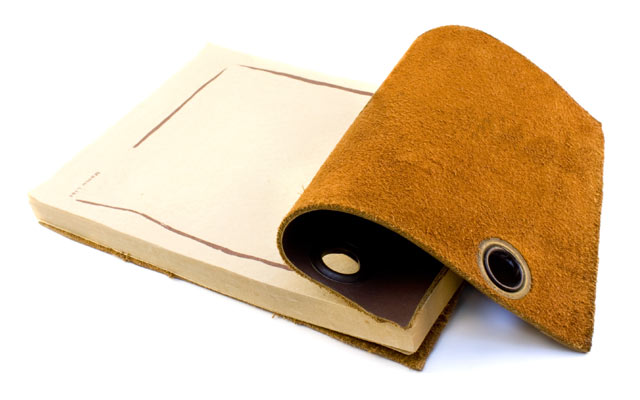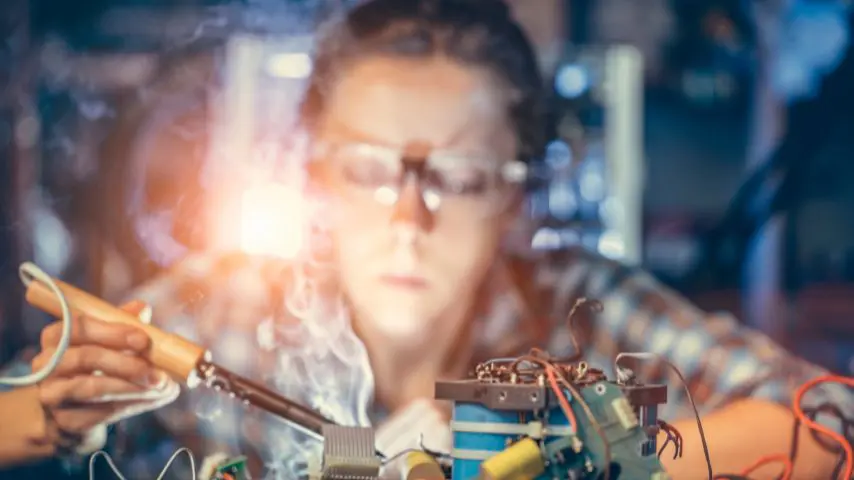My Engineer’s Notebook: Bryony DuPont
My Engineer’s Notebook: Bryony DuPont


ASME member Bryony DuPont, Ph.D., an assistant professor of mechanical engineering at Oregon State University, conducts research in artificial intelligence and sustainability science, using simulation, optimization, and advanced computation to make sustainable solutions more realistically feasible. Bryony, who was named as ASME’s representative in the 2016 class of DiscoverE’s New Faces of Engineering-Professional program, is also involved in a number of STEM volunteer and outreach activities for young women in her area. A member of ASME since 2010, she is the co-lead of the ASME Early Career Engineering Committee’s Design and Advanced Manufacturing Market Segment Team, and has previously served the Society as a reviewer, review coordinator and workshop organizer for the Society’s International Design Engineering Technical Conferences (IDETC). Bryony received a bachelor’s degree in mechanical engineering from Case Western Reserve University in 2008. She earned a both a master’s degree and a Ph.D. in mechanical engineering from Carnegie Mellon University in 2010 and 2013, respectively.
What’s inside your engineer’s notebook?
All sorts of things. Lots of notes from reading papers and articles and from discussions with my students. I have a terrible short-term memory, so I’m always taking notes in meetings, at conferences, and thesis defenses. There are lots of product ideas and new research ideas, too — usually sketched out too quickly from excitement and then I have to decipher my own scribbles when returning to my ideas.
Whose notebook would you most like to peek into? Why?
Grace Hopper. She was a rear admiral in the U.S. Navy and a prolific programmer. (She’s credited with first using the word “bug” to represent a coding error, due to finding an actual moth in the circuitry!) Doing what she did at a time when women faced huge cultural obstacles to learning engineering must have been an incredible challenge, and I’d love to know more about her day-to-day work and motivations.
How and when did you know you wanted to become an engineer?
I grew up in the middle of nowhere, so we were constantly building things, taking things apart, and generally making our own fun. I was always into my math and science courses, but it was an interest in spacecraft that ended up pushing me toward engineering. One of my earliest memories is watching space shuttle footage with my brothers and sketching out new shuttle concepts. I read a lot of books (science fiction and nonfiction) that dealt with space, and even had a signed copy of Homer Hickham’s Rocket Boys. Though I didn’t end up studying aerospace engineering (I switched into mechanical engineering for my bachelor’s degree), growing up during the shuttle years was hugely influential.
What's the most exciting project you've ever worked on?
My research team works on developing computational algorithms for real-world green challenges, like renewable energy systems and sustainable product design. I really think all of our work is important and exciting, though I am clearly biased. So far, we’ve designed much more efficient onshore wind farms, some of the first wave energy converter arrays, and tools that help engineering designers conceptualize everyday products that have a reduced environmental impact. We’re driven by the idea that environmentally friendly systems and products aren’t some far-fetched idea, and if we’re smart about their design and implementation, ideas like cost-effective renewable energy and innovative sustainable products can happen tomorrow, not years down the road.
What do you think you’d be doing if you hadn’t become an engineer?
I have bit of a performance bug, and I’ve been acting and performing in musicals since I was young. I’d love to say that I’d be on Broadway, but that would probably be overselling my talent a bit. I’ll stick to engineering, I think — I really do have the best job in the world.
What’s your favorite activity when you’re not working?
Making cakes. I like to challenge my engineering and artistic skills by making complex, carved cakes for my friends and family. It’s been an adventure and I’ve learned an awful lot along the way.
Was there a book or a movie that piqued your interest in science or inspired you to become an engineer?
So many! As is that case with many engineers, I really cannot emphasize how influential science fiction (and science fact) has been in my life. I’m a huge Star Trek: The Next Generation Trekker(thanks, mum!), and I watched Space Camp enough times to wear out the VHS tape. From The Right Stuff and Rocket Boys to Doctor Who and Mythbusters, I’ve experienced so many eye-opening “engineering” experiences from the arts. I still watch movies and read books and think to myself, “I really want to learn how to do that!”
Who are your heroes, either within the engineering profession or in the rest of your life?
I have a wall of prints in my office devoted to my “rock stars” — prominent scientists that are my heroes, including Newton, Tesla, Turing, and Hopper. I love it when students ask me about a name they don’t recognize from the wall. I’ve had the chance to speak at great length about Ada Lovelace that way. Personally, my grandfather has been a huge influence in my life. He’s a mathematician and all-around geek, and encouraged me to be a geek, too.
What’s the most meaningful or rewarding aspect of being connected to engineering?
I’m an engineer and an educator, and while mechanical design research is my first love, I love getting younger students involved in science and engineering. Just last week, some of our graduate students and faculty went to the USA Science and Engineering Festival in Washington, D.C., and we met thousands of young people who are fascinated by fundamental engineering principles. Helping to provide opportunities for students to learn more about what engineers do — by making helicopters out of paper cups, learning how robots can be made out of squishy materials, and firing ping pong balls at 400 mph — was so rewarding for all of us. Helping students have “aha moments” is an awesome feeling.
What does ASME mean to you?
ASME has provided me with so many opportunities as an early career engineer in research, education, and service. I started attending ASME conferences six years ago, and have met countless collaborators, mentors, and friends — all of whom have had a positive impact on my career. I’m also the co-lead of the ASME Design and Manufacturing Market Segment Team, where we’re working to create new and exciting content for ASME events. I co-run programs for students at ASME IDETC, including a design competition and a graduate student workshop, which lets me interface directly with the next generation of researchers. I also have my undergraduate design students work on the annual ASME Student Design Competition, which gives them the opportunity to design and build mechanisms for regional and national competitions. To me, ASME is a common thread in all aspects of my career, and I'm immensely grateful for the opportunities ASME provides.
To me, ASME is a common thread in all aspects of my career, and I'm immensely grateful for the opportunities ASME provides.”Bryony DuPont



